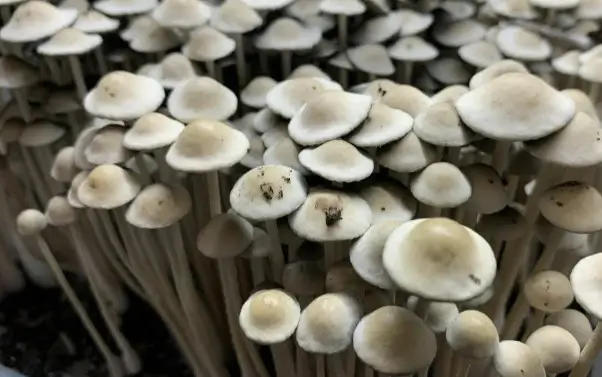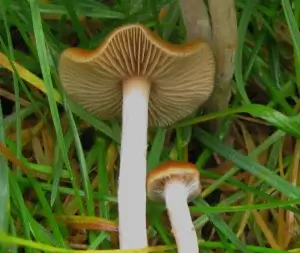Psilocybe panaeolus: A Closer Look at a Curious Little Mushroom
Table of Contents

Mushrooms have a way of grabbing our attention—some for their culinary appeal, others for their curious chemistry. Among the many fascinating species, Psilocybe panaeolus has stirred both interest and confusion. So what’s the story behind this elusive name?
Wait, Is That the Right Name?
Here’s where it gets interesting: Psilocybe panaeolus isn’t a scientifically accurate term anymore. Most experts now distinguish between the genera Psilocybe and Panaeolus. While both contain psychoactive species, they come from separate fungal families.
In casual conversation, people often use “Psilocybe panaeolus” when they actually mean Panaeolus cyanescens—also known as the “Blue Meanie.” Let’s explore that species in more detail.
Breaking It Down: Scientific Classification
- Scientific Name: Panaeolus cyanescens
- Common Names: Blue Meanie, Copelandia, Hawaiian Mushroom
- Family: Bolbitiaceae
- Primary Compound: Psilocybin (and psilocin)
This tiny mushroom is mighty can contain up to 2.5% psilocybin by dry weight—one of the highest concentrations found in any wild species.
Where It Grows
You’ll find it in tropical and subtropical regions: Southeast Asia, Central and South America, parts of Australia, and the southern U.S. It tends to grow on cow dung or grassy fields after heavy rains—so yes, it thrives in the weirdest places.
Is There a Traditional Use?
Unlike Psilocybe cubensis, which has ceremonial roots in Mesoamerican cultures, Panaeolus cyanescens doesn’t have a deeply documented history of Indigenous use. It rose to prominence through modern psychedelic exploration and mycological research in the mid-20th century.
Is It Legal?
Here’s the thing—psilocybin and psilocin are classified as Schedule I substances in the United States. That means federal law prohibits their possession, even though some cities and states are starting to reconsider that stance.
Places like Oregon, Oakland, Denver, and Detroit have passed decriminalization measures. Still, it’s essential to know your local laws before going anywhere near these mushrooms.
The Research: What Science Is Saying
Most clinical studies focus on psilocybin itself rather than the mushroom species. That said, the results are pretty incredible.
One study published in JAMA Psychiatry showed that psilocybin-assisted therapy could produce rapid and lasting reductions in depressive symptoms. Participants reported profound emotional breakthroughs and increased psychological well-being—even weeks after the experience.
Can You Identify It in the Wild?
Technically, yes. But should you try? Honestly—only if you’re trained. Foragers can easily mistake it for toxic lookalikes. Here’s what you might notice if you stumble across one:
- White, slender stems that bruise blue
- Grayish, bell-shaped caps that flatten over time
- Jet-black spore prints
- Preference for dung-rich soil and humid climates
If you’re curious, consider connecting with a local mycological society or educational institution. Many offer safe, legal opportunities to study these species under a microscope.

Final Thoughts
Whether you call it Panaeolus cyanescens or mistakenly refer to it as Psilocybe panaeolus, this mushroom continues to intrigue both scientists and seekers. With growing interest in psychedelic therapy and changing legal attitudes, it’s safe to say we’re only scratching the surface of what this little mushroom has to teach us.
Common Questions
Is Psilocybe panaeolus the correct scientific name?
Not quite. “Psilocybe panaeolus” is an outdated or colloquial term. The correct species name is usually Panaeolus cyanescens, a highly potent psilocybin-containing mushroom. It belongs to a different genus than Psilocybe mushrooms like Psilocybe cubensis.
What is Panaeolus cyanescens commonly known as?
It’s often called “Blue Meanie,” “Copelandia,” or the “Hawaiian Mushroom.” Despite the friendly nickname, it’s one of the most potent psychedelic mushrooms known to science.
How strong is Panaeolus cyanescens compared to other mushrooms?
Very strong. Some lab analyses have shown it can contain up to 2.5% psilocybin by dry weight—much higher than average for psilocybin mushrooms.
Is it legal to possess Panaeolus cyanescens?
Under U.S. federal law, no. Psilocybin and psilocin are both Schedule I controlled substances. However, some cities and states have begun decriminalizing personal use or possession in small amounts.
Can Panaeolus cyanescens be mistaken for dangerous mushrooms?
Yes—and that’s a big deal. It shares visual traits with several non-psychoactive or even toxic mushrooms. If you’re not experienced in mushroom identification, it’s best not to forage without proper guidance.


